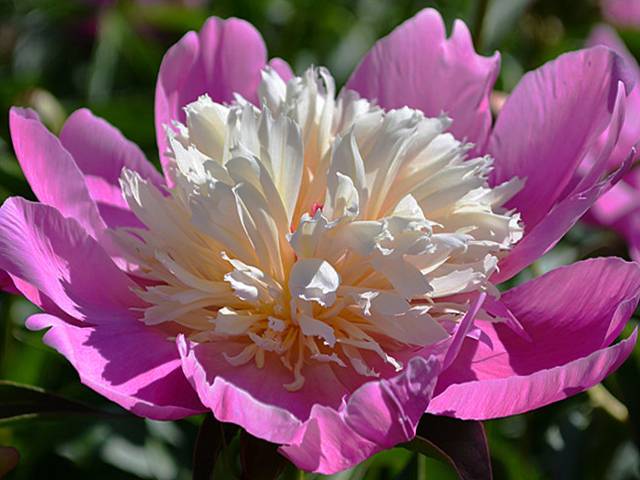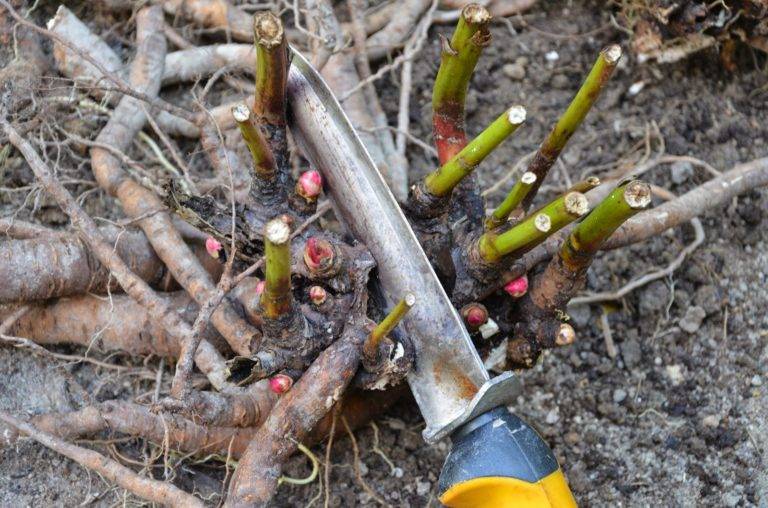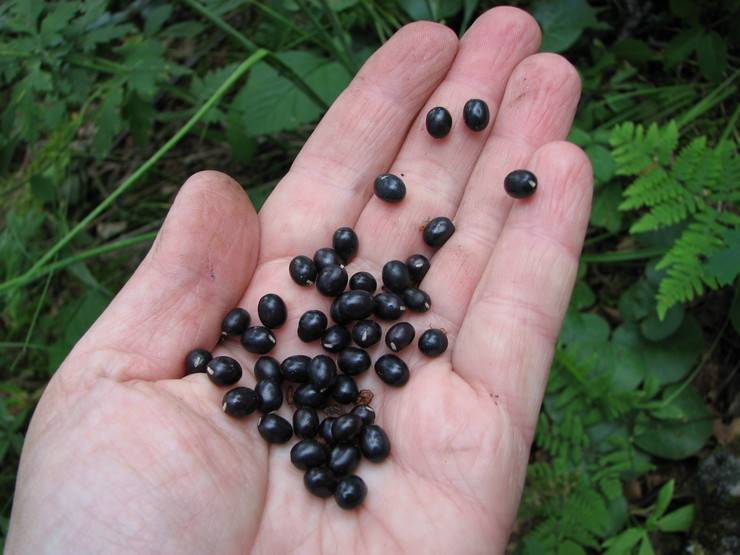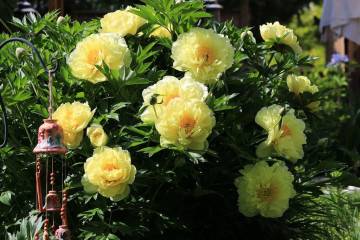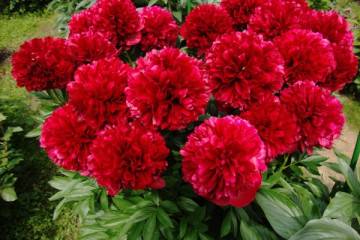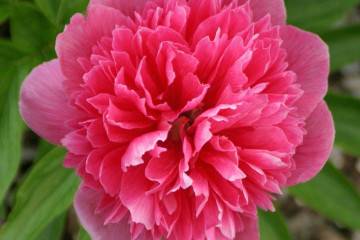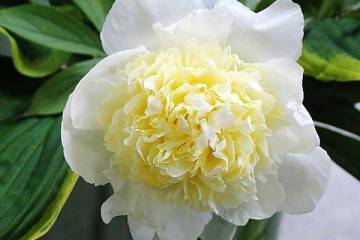Peony Bowl of Beauty (Paeonia Bowl of Beauty) - growing on the site
Content:
The peony, according to ancient beliefs, is a symbol of love and the king of flowers. It can be found in almost every garden, the variety of wonderful colors and aromas make the peony a decoration of the plots. There are many varieties and hybrids of this plant, one of the most popular and recognizable is the Bowl of Beauty peony.
What is this grade
This herbaceous species of peonies was bred by the Dutch breeders of the originator firm "Hoogendoorn" back in 1949. The English name paeonia Bowl of Beauty is translated as "Peony Bowl of Beauty". The wonderful and delicate exterior of the flower fully justifies this name.
a brief description of
Milk-flowered peony is a herbaceous perennial with a powerful fleshy root system and straight, upright stems. The bush can reach 0.9 m in height, the peduncles are stable. The foliage is large, shiny, dark green in color. Flowers are single, larger than average, semi-double and characteristic Japanese form. Large flowers (up to 0.2 m in diameter) are painted in lilac-pink or fuchsia colors with a pale lemon-yellow center.
The peony does not smell too strong, but its aroma is delicate and memorable.
Advantages and disadvantages of the variety
Bowl of Beauty has many benefits:
- unpretentious to soil types and care, frost-resistant;
- drought and heat resistant;
- has unusual eye-pleasing peduncles;
- blooms early.
For some amateur flower growers, this peony variety smells too weak, and this is called its only drawback.
Use in landscape design
The Milk-flowered Bowl of Beauty is very good at organizing rock gardens, decorating voluminous forest parks, as well as garden plots. Such peonies can be planted singly, or they can be mixed with other crops. These flowers look great on a high leg and in various bouquets.
Growing a flower in the open field
Most often, the Bowl of Beauty peony propagates by dividing the bush, and breeders are engaged in seed germination.
Planting by root cuttings
The division of the peony rhizome is used to obtain new full-fledged bushes. The stalks are cut to 1–2 cm stumps above the buds. The flower is dug in a circle with a diameter of 0.25 m from the middle and gently loosened. At this stage, you can use a pitchfork.
The bush is taken out of the planting pit and the lumps of earth are cleaned off, washed with warm water.
The next stage - with a sharp knife it is necessary to cut the root into 2-3 parts, each should have 3-4 eyes and roots.
The resulting delenki are seated in prepared pits, deepening the roots by 3-5 cm.
The most favorable for such transplants is the dormant period, which occurs for a given plant in late summer - early autumn. But in the spring it is extremely undesirable to do this, since the sprouts begin to hatch very early, and they can be damaged during separation.
Seat selection
For the normal growth of a flower, it is necessary to choose the right place for planting it. Peony Bowl of Beauty, like many other bush flowers, requires well-ventilated areas, so it is better to plant them away from other plants and buildings for better air circulation. The place should be sunny and open, peonies cannot stand shade.
Loamy cultivated soils with a slightly acidic pH level (not higher than 6.5) are suitable. To avoid root rot, places with high groundwater levels should be avoided.
How to prepare the soil and flower for planting
To plant the Beauty Bowl peony, loamy soils are recommended to be flavored with sand, peat and manure. Clay and humus are added to a predominantly sandy substrate. The peat bog contains sand, organic additives and wood ash. On unfortified soil, the plant may wither.
Landing procedure
A step-by-step description of the procedure for planting in open ground looks like this. A hole is dug up to a depth of 0.6 m and a diameter of up to 0.8 m. After that, a mixture of soil, fertilizers (potassium sulfate and superphosphate), humus and compost is poured into it. The prepared seedling is placed in a hole and covered with ordinary soil and lightly compacted.
It is necessary to spill the planted bush well, at least 10 liters of water, and supplement the soil that has settled from this and mulch with straw.
Seed planting
Breeders prefer to propagate Bowl of Beauty by seed. This is a very time consuming and time consuming method. The seeds go through 2 stages of stratification, and the florist will be able to see the first flowers only after a couple of years. The collection of planting material begins in mid-August and continues until mid-September.
The extracted seed is immediately placed in the soil (by 5 cm), where it is at a temperature of 15-30 ° C (the first roots appear), and then the next cold stage takes place at a temperature of 5-10 ° C.
For germination, a growth regulator is used, the seeds are soaked in it, and then covered with a glass cap. When the first sprouts appear, the seedlings are moved to a warm (up to 20 ° C) room.
Plant care
Bush care includes watering, feeding, loosening and mulching.
Watering and feeding
In the first year, feeding the peonies is not required; subsequently, they can be sprayed with a solution of agriculture. In June, the Bowl of Beauty is fed with mineral fertilizers, diluting them in a proportion of 2 tbsp. spoons on a bucket.
From the second year of cultivation, flowers are given mineral and organic fertilizers. To improve flowering, a diluted mullein is poured into the hole. In autumn, potassium-phosphate mixtures are introduced, while nitrogen compounds are not recommended.
Mulching and loosening
The soil in the root zone is loosened to rid the flower of weeds and crust on the surface of the earth. And to preserve moisture and warm the flower in the cold, mulching is used with mowed grass, sawdust or humus.
Preventive treatment
To protect against pests, peony bushes in the spring are treated with fungicides, Bordeaux liquid, foundationol, topaz, copper oxychloride.
From folk methods, treatment with a solution of celandine in a ratio of 0.5 kg of grass per 5 liters of water is used. The procedure is repeated several times at 5-day intervals.
Peony Blossom Bowl of Beauty
This type of peonies is popular primarily due to the wonderful flowers of pleasant colors.
A period of activity and rest
The period of activity is the beginning of flowering.For such early peonies, it begins at the end or even the middle of the last spring month and lasts one and a half to two weeks. The rest of the time, the Bowl of Beauty has a dormant period.
Care during and after flowering
During the active formation and blooming of buds, feeding is not required. But in the subsequent period, the flower can be fed a little with superphosphate and potassium sulfate.
What to do if it does not bloom
The absence of flowers on a peony bush can be caused by the following reasons:
- too old plant;
- unsuccessful landing site;
- violation of the rules of agricultural technology;
- insufficient foliage;
- abundant flowering last season;
- excess nitrogen fertilizers.
Eliminating these reasons (in particular, trimming excess foliage or buds, changing the composition of top dressing) will allow you to wait for the long-awaited flowering of the Bowl of Beauty bush next year.
Peonies after flowering
This is a very important time for the flower when it recovers its strength and prepares for winter. Scattered petals must be removed immediately to prevent the appearance of fungus.
Pruning
First, dry inflorescences are removed, and at the end of photosynthesis, overgrown and dried foliage is removed. At the same time, the roots continue to accumulate useful substances. Shoots are removed last, in each climatic region - its own terms (October-November).
Before pruning the stems, the soil next to the bush is spilled with water and fertilizers (ash and bone meal).
Preparing for winter
In autumn, the amount of watering is sharply reduced, in addition, the plant is saturated with water due to rain moisture. For the winter, bushes (especially young ones) should be covered with soil, dry peat or a compost heap.
The shelter is removed with the onset of heat.
Diseases, pests and methods of control
Most often, peonies of this variety are affected by gray rot, which is provoked by an excess of nitrogen or dampness. The fight against this scourge consists in trimming the damaged parts and spraying with copper sulfate.
Powdery mildew is defeated with soapy water or the same vitriol.
Ants, aphids, gall nematodes and petal-eating bronze are considered pests of peonies. You can deal with them with soapy water or phytoverm preparations, actellik.
Bowl of Beauty peonies are well-deservedly popular due to the unique beauty of their flowers. Care consists in performing simple agrotechnical techniques that help these perennials to delight their owners with lush flowering for a long time.
